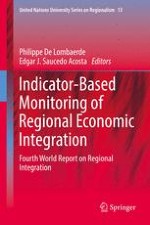This volume brings together experts from different world regions. It presents various experiences with building indicator systems for monitoring the implementation of regional economic integration policies such as preferential trade areas, common markets or economic and monetary unions. The volume discusses both the technical and governance aspects of such systems, and best practices. The regional experiences that are covered include: the European Union, Eurasia, ASEAN, the East African Community (EAC), COMESA, CARICOM, the African-Caribbean-Pacific Group, and the Americas. In addition, various chapters discuss cross-cutting methodological challenges related to trade-related indicators.
